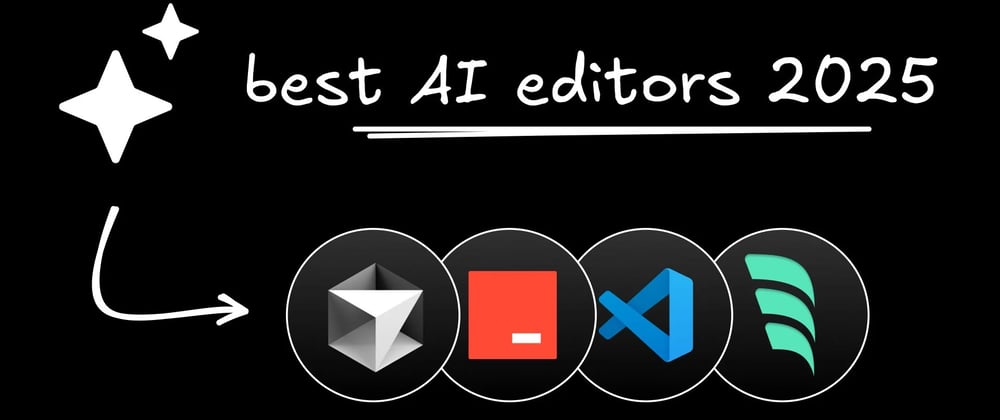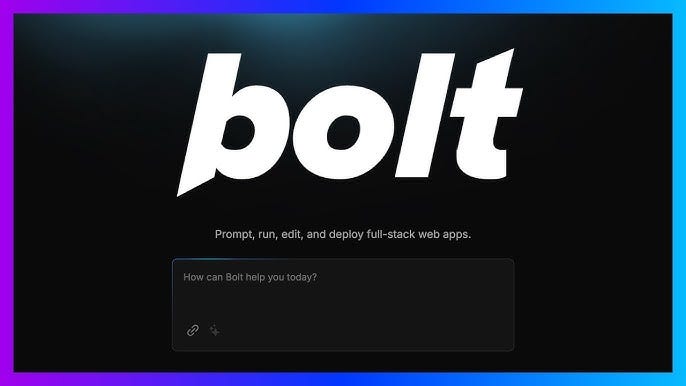By 2025, artificial intelligence has made incredible strides in how we write software. While “no-code” tools still get a lot of attention for allowing non-developers to build apps without typing syntax, a parallel revolution is happening for people who actually want to write (and refine) code, yet still benefit from powerful AI assistance. Enter the realm of AI-powered code editors—tools that dramatically speed up development by translating human-language prompts into clean, functional code.
Unlike no-code platforms that skip the coding process altogether, these AI-augmented editors exist to help developers (and those learning to code) by offering suggestions, writing boilerplate, catching bugs, and even architecting complex features—while still letting programmers control the final output.
The Rise of AI in Coding
Artificial intelligence for code generation isn’t entirely new; code editors have offered basic autocomplete features for years. But today’s AI coding companions can handle multi-file refactors, analyze entire projects to offer suggestions, and integrate seamlessly with frameworks and libraries. By leveraging large language models, these tools understand context, patterns, and best practices better than ever before, making the coding process more accessible, collaborative, and efficient.
This development has been fueled by two major forces:
1. Increased Demand for Software: Virtually every business is now a “tech” company in some capacity, creating endless need for rapid application development.
2. AI’s Rapid Evolution: Language models trained on massive datasets have gotten eerily good at parsing natural language instructions and generating relevant, error-free code.
How AI-Powered Code Editors Work
AI-powered code editors serve as coding companions rather than replacements for developers:
- Context-Aware Suggestions: They analyze the code you’ve already written to provide targeted recommendations.
- Natural Language Prompts: You can type instructions like, “Create a function to handle user authentication,” and the editor will generate a draft that you can then review or modify.
- Project-Wide Analysis: Many can scan entire repositories to offer consistent refactoring strategies, ensuring everything stays up to date.
- Integration with Popular Frameworks: Whether it’s React, Node.js, Python, or something else, these editors usually recognize common libraries and best practices, cutting down on repetitive tasks.
Though these tools are powerful, they don’t eliminate the need for a developer’s judgment. You still decide how your codebase is structured, which logic to keep, and how to handle edge cases. Think of AI-powered code editors as a high-octane extension of your development environment that helps you write, debug, and optimize code much faster.

Spotlight: 5 AI-Powered Code Solutions Dominating 2025

1. Bolt.new — Full-Stack Made Easy
Bolt.new, created by StackBlitz, offers a powerful combination of AI-assisted coding and an in-browser development environment. Just describe the functionality, and the platform spins up both the frontend and backend using frameworks like React or Next.js. It’s a boon for startups needing to quickly test ideas or for seasoned developers who want to skip the usual setup hassle.
- Notable Features:
- AI pair programmer that generates code from plain instructions.
- Seamless integration with popular JavaScript frameworks.
- Token-based pricing starting at $20/month, making it accessible for small projects.

2. Cursor AI — Code with an AI Partner
Cursor AI, a fork of VS Code, transforms the coding experience into a collaborative process. It can analyze multiple files at once, refactor code, and even add new features based on simple text prompts.
- Why It Shines:
- Feels like a natural extension of the coding process.
- Ideal for both beginners and advanced developers.
- Uses Claude 3.5 Sonnet for smart code completion and debugging tips.

3. windsurf — Streamlined Cross-Platform Mobile Dev
Windsurf is all about mobile application development on a code-centric foundation, blending the power of AI with real coding in a cross-platform context. Built on top of Flutter-like technologies, it provides the scaffolding for responsive, native-feeling iOS and Android experiences—without removing developers from the equation.
Key Capabilities
- Rapid Mobile Layouts: AI suggests optimal UI arrangements based on your design prompts.
- Native Performance: Focuses on producing high-quality mobile code, so your app feels fully native.
- Customizable Code Access: You can still edit the generated files directly, ensuring you’re never locked out of crucial changes.
Who Uses It
- Mobile-focused teams who appreciate the speed of AI-generated scaffolding but still want full code ownership.
- Developers who prioritize native performance across multiple devices.

4. Lovable — AI-Infused Web Dev for Stylish Interfaces
Lovable has carved out a niche for building sleek web applications with AI assistance while retaining a traditional coding layer. It’s known for producing polished frontends quickly, but it also supports backend logic and integrations.
Key Capabilities
- Design Intelligence: Offers layout suggestions and aesthetic enhancements to help devs produce visually appealing UIs.
- End-to-End: Combines styling, data models, and server logic in a single environment, with full code export available at any time.
- Community Templates: Jump-start new projects with a wide range of pre-built designs, then customize to fit your needs.
Who Uses It
- Developers focusing on consumer-facing sites or web apps where design matters as much as functionality.
- Teams that need to ship visually consistent applications without constantly re-inventing the UI wheel.

5. Grok 3 — Mobile-First, AI-Assisted React Native
Grok 3 is Elon Musk’s xAI’s latest flagship AI model, released on February 17, 2025, as a direct competitor to industry leaders like OpenAI’s GPT-4o, Google’s Gemini, and Anthropic’s Claude 3.5. Developed over months using the massive “Colossus” supercomputer cluster in Memphis containing approximately 200,000 GPUs, Grok 3 represents a significant leap forward with ten times more computing power than its predecessor. The model was trained on an expansive dataset that includes various sources from user posts on X to court case filings, positioning it as what Musk describes as a “maximally truth-seeking AI, even if that truth is sometimes at odds with what is politically correct”. Available to X’s Premium+ subscribers at $40 per month or through Grok’s standalone app and website, Grok 3 forms part of a family of models including the smaller, faster Grok 3 mini variant.
Key Capabilities
- Grok 3 utilizes test-time computing that allows it to refine solutions over seconds to minutes using reinforcement learning, significantly improving accuracy in complex tasks like mathematical proofs, logical puzzles, and scientific simulations
- With a massive 1 million token context window (8 times larger than earlier models), Grok 3 efficiently processes extensive documents and complex prompts, making it particularly effective for summarization, research analysis, and large-scale data interpretation
- Grok 3 provides developers with a comprehensive suite of tools and APIs for integration into applications and services
Who Uses It
- Currently, Grok 3 is available to X’s Premium+ subscribers who pay $40 monthly for access to the advanced AI capabilities integrated directly into their social media experience
- Grok 3’s advanced reasoning capabilities and “Big Brain” mode make it valuable for scientific research, engineering simulations, and strategic planning scenarios
The Road Ahead: More Intelligent, More Integrated
Looking beyond 2025, expect AI coding assistants to keep getting smarter:
- Advanced Context: The AI will understand not only your code but also the broader goals of the project, offering more holistic advice.
- Plug-and-Play AI Services: Seamless integration with specialized AI (e.g., computer vision, analytics) will let developers add cutting-edge features by simply describing them.
- Enterprise-Ready Features: More robust security, compliance, and governance controls will become standard, making these AI editors suitable for mission-critical deployments.
- Hybrid Coding Ecosystems: The line between no-code, low-code, and full-code AI solutions will blur, offering a continuum of coding approaches in one environment.
While some platforms aim to remove coding altogether, AI-powered code editors recognize that many professionals (and aspiring developers) still want to write code—they just want to do it faster, smarter, and with fewer headaches. These tools provide the best of both worlds: rapid feature development guided by AI, paired with the flexibility and control of hands-on coding.
In a world where software is eating just about everything, AI-augmented coding offers a significant advantage. Developers remain the decision-makers, focusing on creativity, architecture, and problem-solving, while AI shoulders repetitive tasks. For many, that’s the perfect blend: you get to code, but you do it in a future-forward way that cuts out a ton of grunt work.
When it comes to building tomorrow’s software, the question is no longer, “Do I code or do I go no-code?” Instead, it’s about how best to combine human and AI strengths to deliver powerful, efficient, and innovative solutions.